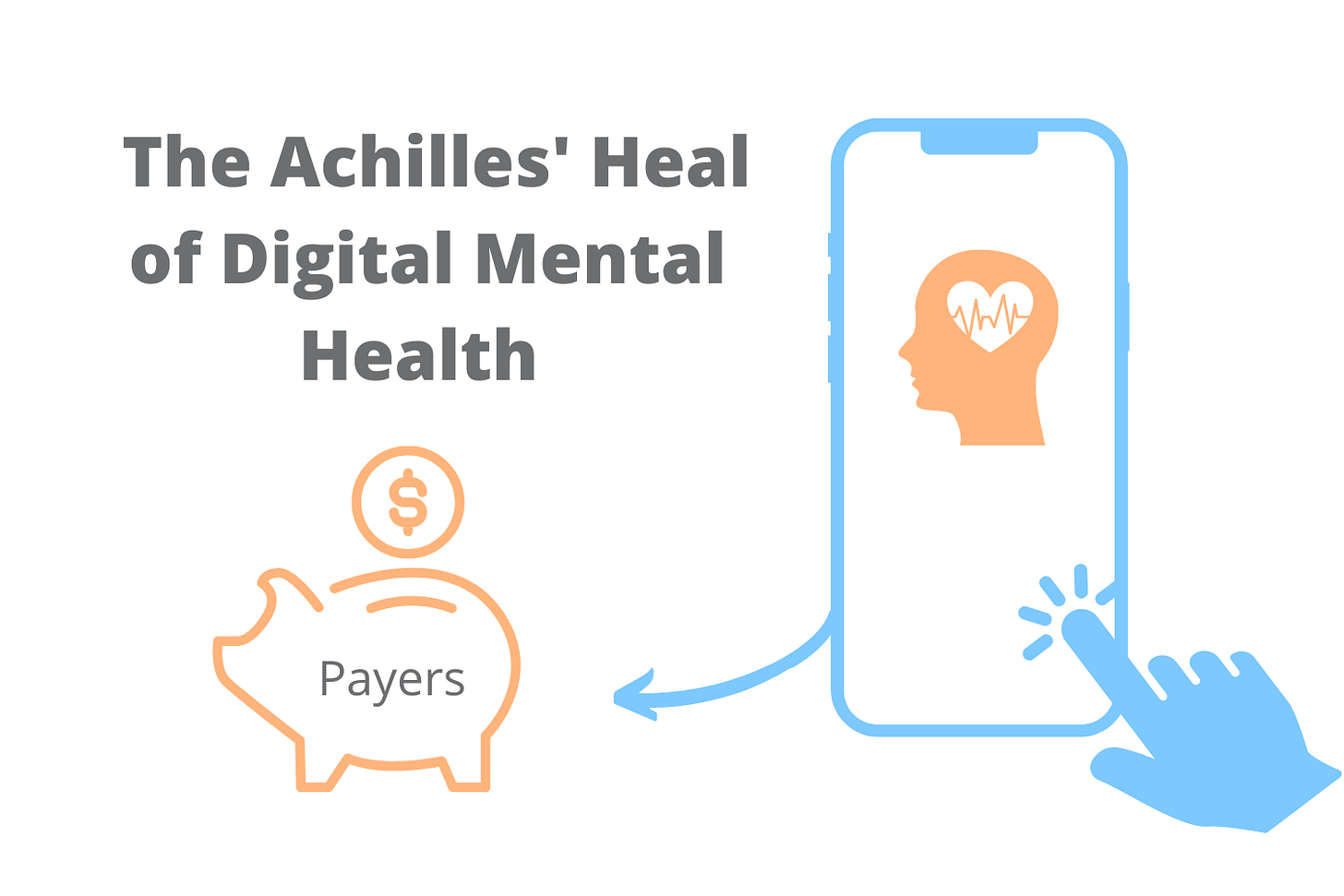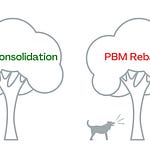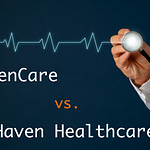Digital mental health is a sizzling-hot area that attracts a large amount of investment. In 2021, venture capital poured $5 billion into digital mental health startups, accounting for one-sixth of the $30 billion investment in digital health. In the first half of 2022, the pace slowed down, but still, these companies hauled in $1.3 billion, larger than any other non-mental health digital health investments.
It was estimated that about 10,000 to 20,000 mental health apps are available, ranging from mindfulness, meditation, and therapy, to prescription drugs. Digital mental health interventions may be provided via computers, tablets, smartphones, virtual reality equipment, and gaming devices, and they may come with or without support from unlicensed personnel or licensed clinicians.
Roughly speaking, digital mental health interventions can be classified into three buckets: consumer-driven apps, therapeutic apps, and clinician-led digital interventions.
Consumer-driven apps are typically used by consumers on their own, and these apps do not claim to diagnose, prevent, or treat mental health conditions and do not require the approval of the Food and Drug Administration (FDA). These apps may offer psycho-education, motivational guidance, or coping skills. Therapeutic apps are developed to treat mental health conditions and require FDA premarket approval. So far, only a few apps have been approved; they can be used to treat attention deficit hyperactivity disorder, nightmare disorder, substance abuse, and insomnia. Clinician-led digital interventions are tele-mental health services (i.e., tele-psychiatry or tele-therapy) led and supervised by licensed clinicians.
Existing academic evidence shows that well-designed mental health apps are effective in improving health outcomes, particularly for anxiety and depression, but they are generally not reimbursed by payers.
There is consistent evidence on the usability, acceptance, safety, and effectiveness of digital mental health interventions. Mental health apps based on clinical guidelines and developed with input from both users and clinicians improve common mental health conditions such as anxiety and depression. Digital mental health interventions are particularly effective and generate high user satisfaction when licensed clinicians are involved.
Most mental health apps are consumer-driven apps, but they are typically not reimbursed by payers, although some self-insured employers or integrated systems cover them. Payers do cover clinician-led digital interventions but may not reimburse therapeutic apps. During the pandemic, most payers waived cost-sharing for clinician-led digital interventions.
Digital mental health has an Achilles’ heel in generating savings for payers: its convenience makes people come out of the woodwork and increases service volume.
This is due to several reasons that make the utilization of formal care highly sensitive to the economic cost of receiving treatment, e.g., increased availability of treatment options, improved insurance coverage, lower cost-sharing, and reduced travel.
As a result of the factors discussed below, when digital mental health offers convenience and reduces the cost of receiving treatment, more people may seek formal care instead of relying on informal care or receiving no care at all. Among those who already receive formal care, the frequency and duration of such care may increase.
1. There is a potential demand for mental health services that has not been materialized.
According to the National Institute of Mental Health, 52.9 million (21 percent) U.S. adults had at least one diagnosable mental illness in 2020, but only 24.3 million (46 percent) received professional mental health services. Also, 14.2 million (6 percent) adults had serious mental illnesses, among whom 65 percent (9.1 million) received formal care. This may be because of a shortage of licensed clinicians. Nationally, the existing clinicians can serve less than one-third of the U.S. population, assuming one clinician per 30,000 population.
2. There are various potential substitutes for professional mental health services, especially for non-severe mental conditions.
Social support plays an important and interesting role in seeking formal care. When mental health conditions are mild or moderate, family, friends, co-workers, churches, or even bar tenders may help mitigate or resolve an individual’s mental health syndromes such as anxiety or depression. That is, informal care can substitute for formal care, and as a result, individuals with social support are less likely to seek formal care. However, when symptoms are severe, the greater social support, the more likely an individual would seek professional mental health services. This is because support givers would encourage an individual to seek formal treatment; they may even pressure that individual to do so when cognitive or emotional impairment is so severe that the affected individual is not able to make treatment decisions.
There are also substitutes for formal care other than social support for certain mental conditions, e.g., yoga, meditation, and massage, among others.
3. Even in the absence of digital interventions, mental health services utilization is much more sensitive to the price (or cost) of treatment than physical health services.
In economic terms, mental health services have a larger elasticity of demand. According to the existing academic research, the elasticity of demand for outpatient mental health services is typically two to three times that of typical outpatient medical (i.e., physical health) services.
4. Digital mental health offers convenience and facilitates access to care.
Both consumer-driven mental health apps and clinician-led digital interventions make access easier; formal care provided by clinicians is literarily available at your fingertips. In addition, the use of digital interventions can reduce stigma, a major barrier to receiving mental health services.
The jury is still out, but it is more likely than not that wide adoption of digital mental health will increase overall spending for payers.
There is a paucity of research on whether implementing digital mental health affects the total cost of care, and the limited results are inconclusive. A 2011 study conducted by the Veteran Affairs (VA) compared tele-psychiatry to usual care among depression patients. Patients in the tele-psychiatry group spent more resources on depression treatment as well as physical health specialty care, resulting in a significantly higher total outpatient cost. But another VA study published in 2018 reached a different conclusion about tele-psychiatry vs. in-person care: an annual savings of $2,100 per patient.
Given that mental health services are sensitive to the convenience and cost of receiving treatment, chances are high that digital mental health would lead to a higher total cost of care. Payers may hesitate to adopt digital mental health interventions without restrictions before innovators can prove with rigor that digital interventions can not only improve patient outcomes but also reduce total healthcare costs.
Increased service utilization may partially offset the savings generated from improved outcomes and efficiency.
From a payer’s perspective, the ideal situation is to improve patient outcomes and lower healthcare costs. One key benefit of clinician-led digital interventions is that they generate savings from reduced patient travel, but these savings do not accrue to payers.
Digital interventions have been shown to improve patient outcomes, but service volume may increase at the same time. Unless the cost per service session decreases sufficiently to offset the increased volume, the total spending will increase, offsetting the efficiency gain partially or completely.
But, what can we do to generate savings for payers?
Finding the right payment arrangement and improving efficiency is the way out of this predicament.
1. Leverage value-based contracting and be a solution to payers.
If we put ourselves in the shoes of a payer, reimbursing digital interventions on a fee-for-service basis involves a considerable risk of overspending because of the uncertainty in volume increases. One way to solve this is to lower the charge per service session to the extent that a payer would not perceive an excess risk of overspending. For example, innovators can set a price for using mental health apps and another for clinician-led digital interventions.
This approach would give rise to several issues. Payers would still consider fees for mental health apps as additional spending. Innovators will have to figure out how low a unit price they should charge for clinician-led digital interventions. Clinicians are unlikely to lower their prices.
A better arrangement is to offer a solution to payers, promising to deliver a specific level of outcome and bearing the risk of over-utilization. This would allow innovators to leverage technology, improve efficiency (more on this below), and build a competitive advantage.
2. Leverage technology and facilitate clinicians to practice at the top of their licenses to improve efficiency.
Optimal results were observed in research studies when mental health apps are used under the guidance of clinicians, i.e., a blended approach. To best utilize resources, clinicians should practice at the top of their licenses. For example, doctoral-level therapists can delegate tasks to master’s-level ones, unlicensed personnel, or mental health apps, and supervise as appropriate. This would allow a doctoral-level therapist to maximize the size of her patient panel. Note that such an approach to organizing care is difficult, if not impossible, to implement in a fee-for-service setting because of misaligned incentives.
And a patient risk stratification and treatment assignment system is needed to determine when a patient can achieve desired outcome improvements using mental health apps only (with or without the support of unlicensed personnel), clinician-led digital interventions only, or a combination of both. Of course, mental health apps can be used to screen mental illnesses, monitor patient symptoms, and collect timely data as well.
Equipped with a risk stratification system, innovators may focus on a specific sub-population with mental illnesses, among whom savings are more likely to occur.
Kaiser Permanente’s integration of consumer-driven apps into its healthcare delivery system is a case in point. The organization started the integration in 2018. Clinicians can refer patients to mental health apps via its electronic health record system and provide guided support. They included Calm, Headspace, Whil, myStrength, SilverClound, and Thrive, among others to help patients reduce stress and anxiety, improve sleep, and conduct cognitive behavioral therapy.
Takeaways
Digital mental health has attracted a large amount of investment capital in the last several years, but payers are hesitating to reimburse such technologies, especially consumer-driven apps, likely due to a fear of potential over-utilization.
For innovators, the way out of this predicament is to provide a solution to payers. They can leverage technology, facilitate clinicians to practice at the top of their licenses, and utilize value-based contracting to address the challenge.
Nonetheless, rigorous research is urgently needed to confirm if a comprehensive digital mental health solution improves outcomes and generates savings in the meantime.
—
Let us know the topics of your interest (support@AnalyticaNow.net). We would love to cover them. The article is provided by Analytica Now, a company specializing in health analytics, economics, and policy. Thank you for being part of our community! 🎉














Digital Mental Health Has an Achilles' Heel in Generating Savings for Payers. But There is a Way Out.